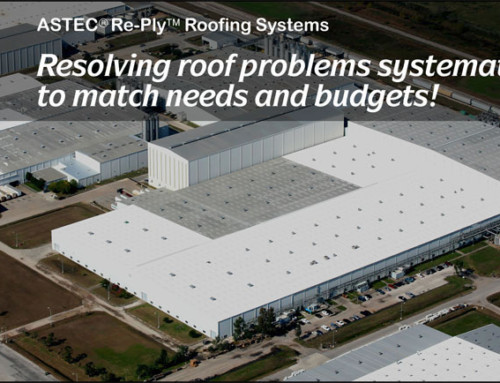Most flat commercial roofs, flat industrial roofs, flat institutional roofs, and flat apartment roofs that are in poor condition tend to leak more in the winter than in the warmer months.
Since the heaviest rainfalls often occur during the warmer months of the year, it seems logical that older flat commercial roofs would also leak more at that time but that’s not usually the case.
How does Weather Impact Flat Commercial Roofs?
What happens is that although the total amount of water on the roof is often greater from rainstorms during the warmer months, that rain also can run off the flat commercial roof much more quickly shortening the amount of time the water can work its way into the cracks and gaps in a leaky flat commercial roofing system.
When snow is on a flat commercial roof and the bottom of the snow starts to melt, the water has much more time to find any cracks and gaps in the flat commercial roof system and leak into the building than when it rains and the water runs off the flat commercial roof much more quickly.
How much a flat commercial roof leaks from melting snow shows the true condition of the roof. Flat commercial roofs that don’t leak much during rainstorms but leak more from melting snow are still allowing enough water into the flat commercial roof system during rainstorms to rot wood roof deck, rust metal roof deck and deteriorate masonry walls over time. The longer water is getting into a flat commercial roofing system the more the deterioration takes place and the more expensive it is to replace.
Unfortunately, once most flat commercial roofing systems start leaking and are out of warranty the more likely that attempted repairs will not be effective for long and the roofing system will need to be replaced to make the roof waterproof again.
Schedule a Free Inspection with a Commercial Roofer
Whether you’re looking for a quick leak repair or a roof replacement, we can help you. Our commercial roofing experts have served businesses all across PA, NJ, and DE.
SERVICE OVERVIEW:





